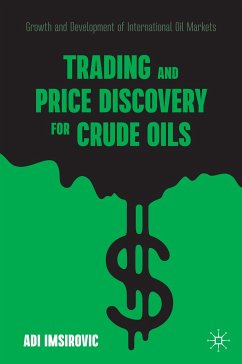Market power is the key to understanding the 'price of oil'. This book uses a simple concept of price-makers and price-takers to examine the evolution of oil markets, their structure, and prices. The early decades of the oil industry were competitive with low barriers to entry. Barely 25 years later, the Standard Oil company created a refining monopoly, buying oil at its own 'posted' price. In the following century, the cartel of major oil companies, helped by their governments, did the same at the international level. OPEC helped producing governments regain control of their own resources, but the organisation was never able to retain a similar level of control. After 1986 price collapse, OPEC abdicated the price-making function in favour of the market. While it never gave up attempts to influence prices, OPEC had to link their official prices to one of the global oil benchmarks. Modern international oil markets function because of oil benchmarks such as Brent, WTI and Dubai.
This book showcases:
.How oil traders played a prominent role in development of the industry
.How policies of consuming nations helped oil cartels
.Why and how the US price of oil was negative
.How AI has changed the way markets operateand the way in which the markets are likely to change in future
Dieser Download kann aus rechtlichen Gründen nur mit Rechnungsadresse in A, B, BG, CY, CZ, D, DK, EW, E, FIN, F, GR, HR, H, IRL, I, LT, L, LR, M, NL, PL, P, R, S, SLO, SK ausgeliefert werden.
"This book will have wide appeal in the energy industry, among academics, regulators and practitioners, and will be of interest to those keen to understand the economic history of the life changing business of oil, an industry which may (or may not) be in terminal decline." (Colin Bryce, Petroleum Economist, June 15, 2021)


